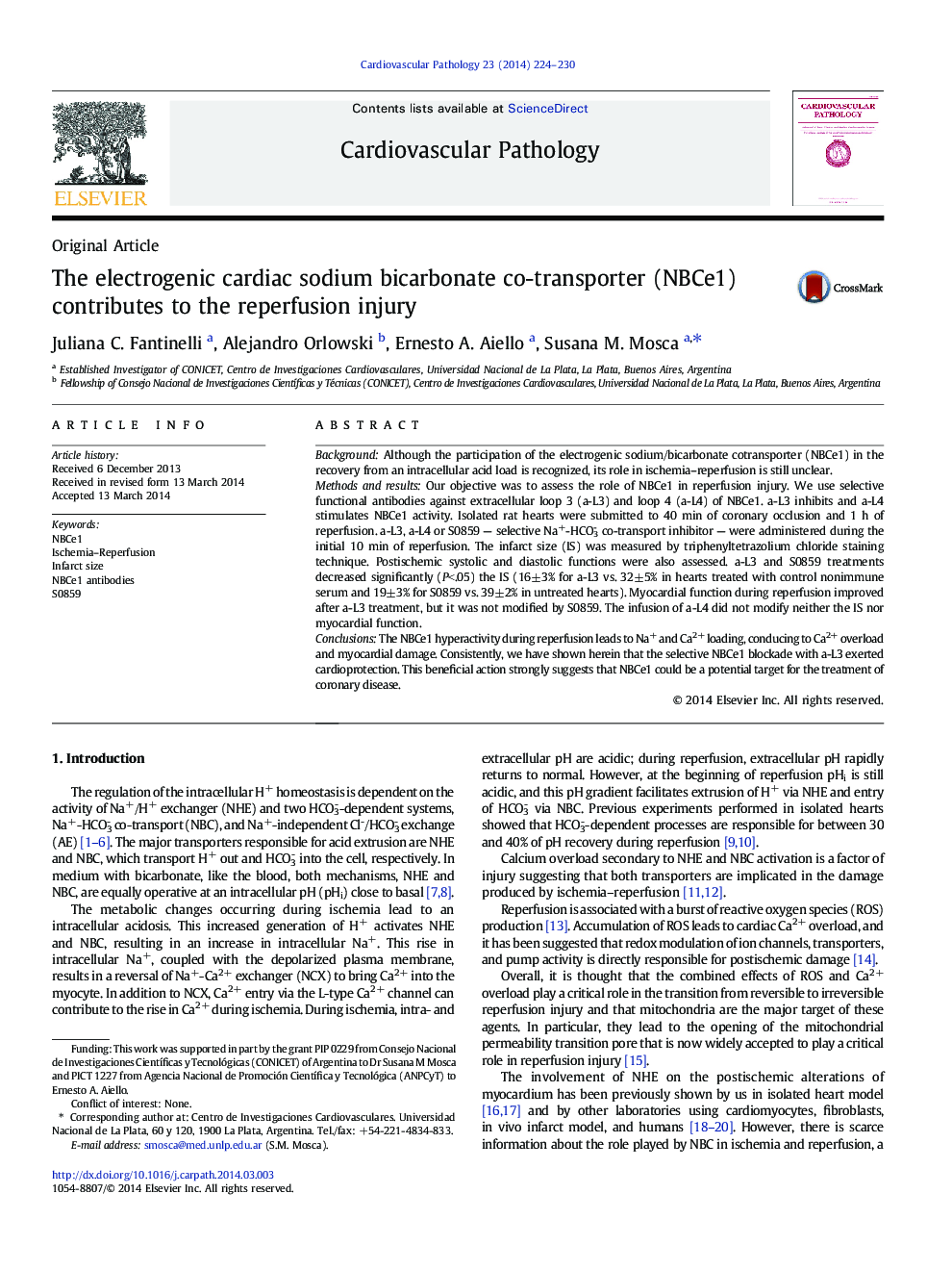| Article ID | Journal | Published Year | Pages | File Type |
|---|---|---|---|---|
| 5951915 | Cardiovascular Pathology | 2014 | 7 Pages |
BackgroundAlthough the participation of the electrogenic sodium/bicarbonate cotransporter (NBCe1) in the recovery from an intracellular acid load is recognized, its role in ischemia-reperfusion is still unclear.Methods and resultsOur objective was to assess the role of NBCe1 in reperfusion injury. We use selective functional antibodies against extracellular loop 3 (a-L3) and loop 4 (a-L4) of NBCe1. a-L3 inhibits and a-L4 stimulates NBCe1 activity. Isolated rat hearts were submitted to 40 min of coronary occlusion and 1 h of reperfusion. a-L3, a-L4 or S0859 - selective Na+-HCO3- co-transport inhibitor - were administered during the initial 10 min of reperfusion. The infarct size (IS) was measured by triphenyltetrazolium chloride staining technique. Postischemic systolic and diastolic functions were also assessed. a-L3 and S0859 treatments decreased significantly (P<.05) the IS (16±3% for a-L3 vs. 32±5% in hearts treated with control nonimmune serum and 19±3% for S0859 vs. 39±2% in untreated hearts). Myocardial function during reperfusion improved after a-L3 treatment, but it was not modified by S0859. The infusion of a-L4 did not modify neither the IS nor myocardial function.ConclusionsThe NBCe1 hyperactivity during reperfusion leads to Na+ and Ca2+ loading, conducing to Ca2+ overload and myocardial damage. Consistently, we have shown herein that the selective NBCe1 blockade with a-L3 exerted cardioprotection. This beneficial action strongly suggests that NBCe1 could be a potential target for the treatment of coronary disease.
